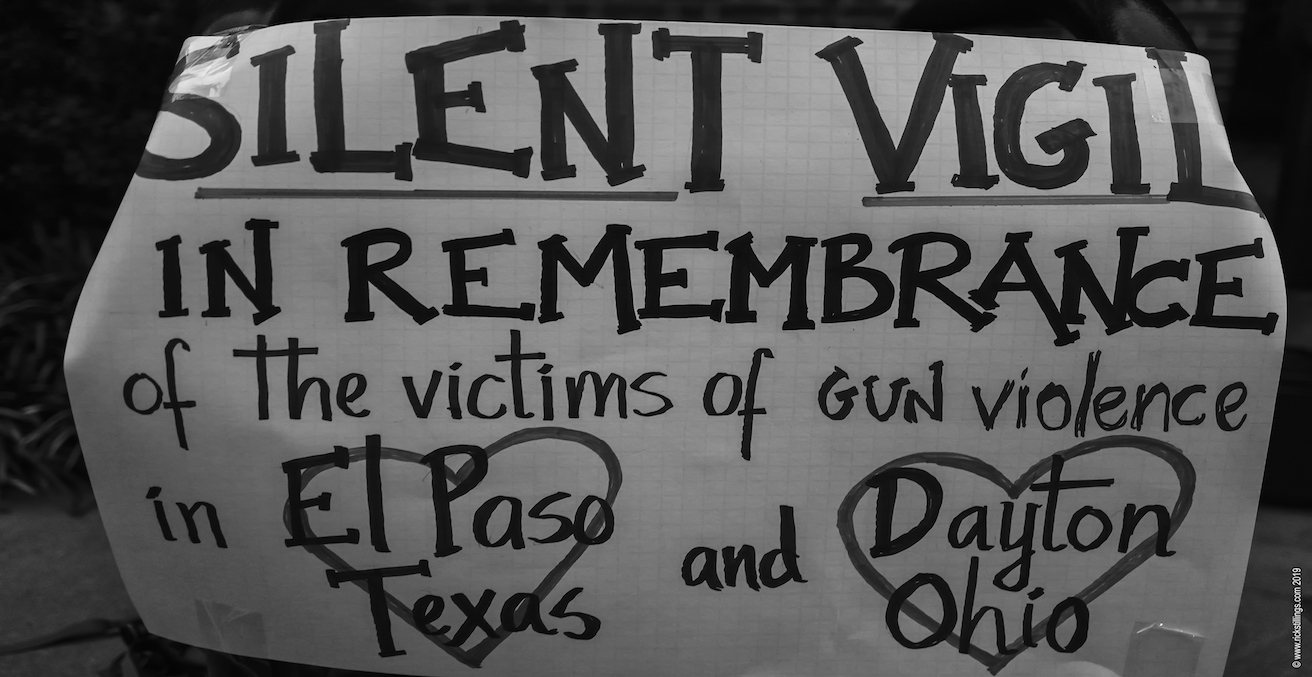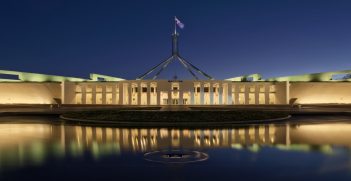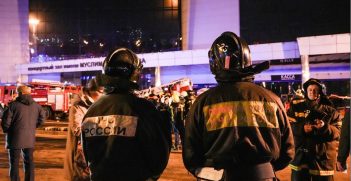The Internationalisation of White Nationalism: From Christchurch to El Paso and Beyond

The recent shooting in El Paso, Texas can be ideologically linked to other incidents, specifically the Christchurch, New Zealand attacks.
Unfortunately, mass shootings, defined as four or more individuals being shot or killed in the same general time and location, have become all too common in the United States. According to the Gun Violence Archive, as of 11 August, there have been 256 such incidents in 2019. The shooting in El Paso, Texas is just one in a long list of such incidents. Following each one, analysts and policymakers try to explain why someone lashes out in such a violent way. Familiar talking points include mental illness as the root cause, or that individuals who perpetrate these attacks are nihilists searching for personal fame and notoriety. We must however not lose sight of what is plainly in front of us. There is enough evidence indicating that the El Paso incident was not an act of revenge or related to a personal grievance, not tied to a wider domestic violence issue or efforts to gain personal notoriety or infamy.
The actions taken by the shooter on that day tells us quite a bit about his intentions. The shooter traveled several hours from where he resided, to El Paso, to commit the attack because it was a) a large city that sits on the US-Mexico border and an obvious political flashpoint over the past several months, and b) due to its geographical location has a very high concentration of Hispanic residents. The shopping centre where the attack unfolded was well known to be frequented by Mexican nationals crossing the border for the day to purchase groceries and other goods. It was chosen strategically. Terrorists like to practice what is termed “propaganda by deed,” essentially the act speaks for itself. The motivation for this act can be found within the action itself, although the shooter reiterated his rationale in a written manifesto titled The Inconvenient Truth, which he posted online prior to the attack.
So how should we characterise the El Paso shooting? It is clearly a hate or bias crime — the prime targets were all Hispanic. More importantly, we must accept that the underlying motivation was ideological and that the attack was undertaken as a way for the shooter to draw attention to a set of political, economic and societal grievances he believes exist in the United States. Briefly, the El Paso attack helps us understand the relationship between ideology and terrorism. Terrorism is an act of violence intended to coerce or intimidate civilian populations and/or an effort to influence or affect government policy. This helps capture what terrorism really is — a strategy or tactic used by individuals or groups to affect political change. Notice that this definition omits any reference to ideology. The nexus between terrorism, the strategy or tactic to influence or affect change, and ideology, is that the changes sought by the individual or group aligns with their ideological vision of how things should be.
The El Paso shooter’s manifesto is a political document. It voices alarm about the shooters vision of the United States and his belief that the future of his country is in peril, and that he, and people “like him,” face an existential threat. He identifies Hispanic immigrants as the cause of these problems. The shooter is demonstrating his anger and frustration about the political status quo, where he believes politicians do nothing to protect the ethnic and cultural heritage of the country which the individual believes contributes to a myriad of social and economic problems. In committing his attack, he is communicating with multiple audiences simultaneously. He is intimidating civilians and trying to actively coerce, or as he states “incentivise” the Hispanic population to return to their home countries. He is also trying to influence others who might identify or sympathise with his ideology to get involved emphasising that, “INACTION IS A CHOICE.” Finally, he goes to great lengths to portray his actions as defensive. He suggests “this attack is a response to the Hispanic invasion of Texas. They are the instigators, not me. I am simply defending my country from cultural and ethnic replacement brought on by an invasion.” The implied position is that he must act because politicians will not.
Not only does the El Paso attack highlight the growing threat which can be posed by white nationalist ideology, it provides us with a warning we would be wise not to ignore. White nationalism, protecting white culture and identity against outsiders or “others,” has been a recurring narrative found among small segments of Western societies throughout history. However, traditionally it has been understood as a domestic issue. It is becoming increasingly clear that individuals inspired to use violence in their pursuit of white nationalist ideology can no longer be simply dismissed as a local threat or challenge. The language and narratives being shared by those who subscribe to this ideology are laying the framework for a larger international movement. Despite conducting his attack in the United States, The El Paso shooter highlights that this is more than an American problem. He shares his sympathy with those in Europe, stating “our European comrades don’t have the gun rights needed to repel the millions of invaders that plaque their country. They have no choice but to sit by and watch their countries burn.”
We are witnessing an evolution or internationalisation of white nationalist ideology. Today, we are increasingly seeing a trend where white nationalists are referencing attacks and individuals in other countries. They often mention the 2011 attack in Norway by Anders Breivik, and his manifesto 2083 – A European Declaration of Independence is frequently exchanged online. The El Paso shooter mentions his support for Brenton Tarrant, the Christchurch shooter and the ideas he shared in his manifesto. Remember, Tarrant himself went to great lengths to decorate his weapons and memorialise international attacks, attackers and victims. Facilitated by technology and the internet, these individuals are now speaking to a larger audience in both word and deed, multiplying followers, supporters and sympathisers exponentially across borders. They are feeding off one another, their ideological beliefs are validated, violence is encouraged and for some, justified. In fact, when viewed internationally, the threat can be framed as even greater: this is no longer about one country, it is everywhere: it is Hispanic migrants in the United States, Muslims in New Zealand, Middle Eastern refugees in Europe. It amplifies the threat and possibly presents a greater sense of urgency for those who believe, “The Great Replacement” is underway. Moving forward we must recognise that these attacks must be viewed as the sum of their parts. Accepting this reality will help us prepare for the threats and challenges we face moving forward.
Dr. Michael G. Zekulin is a lecturer in The School of Politics and International Relations at the Australian National University. His research focuses on terrorism, radicalisation and CVE strategies.
This article is published under a Creative Commons Licence and may be republished with attribution.





